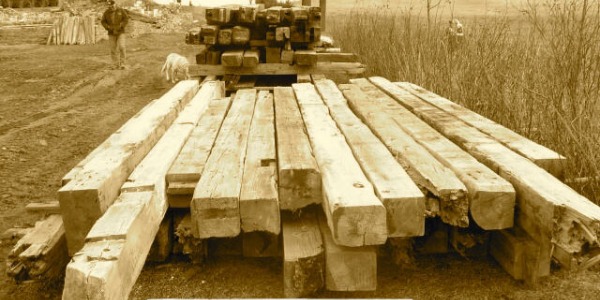Benefits of Using Reclaimed Wood
We live in a world of diminishing natural resources and environmental issues. Meanwhile people continue to look for inventive, unique and standout ways to make their homes even better. So how do we manage? Enter reclaimed wood. Below are some standup reasons to use reclaimed wood for everything from custom wood farm tables to other household furniture to finished wood floors.
Reasons to Use Reclaimed Wood
- When you use reclaimed wood you are not felling an entire, new tree rather you are up-cycling a piece of wood (or several) that need a new purpose. Reclaimed wood may come from old barns, railway ties and even wine barrels. It’s new forest friendly.
- Most lumber grown commercially these days hardly have a chance to make it to maturity and therefore generate weaker, softer planks that often crack and split when exposed to natural elements over a period of time. Reclaimed wood tends to be from much older, larger trees which overall implies more integrity and stability in the wood planks. It’s usually better quality.
Large planks of reclaimed wood are great places to start for custom furniture like a reclaimed wood table or kitchen island. If you are lucky you may find a large piece like a walnut slab that can be turned into a beautiful surface for a dining room table or even a conference table in an office space.
- Reclaimed wood has lots of character and no two pieces are the same. It’s sourced from all over and no one plank of wood is the same. The wood does however, come with all the nail holes and knots that while it may be tricky to maintain at first, you’ll get the hang of it in no time. For helpful tips on how to care for your reclaimed wood table or reclaimed wood furniture check out one of our earlier blogs here.
- When you use reclaimed wood or recycled wood to redo your floors you can even potentially reduce your carbon footprint. By using reclaimed wood you reduce the amount of energy and material used to produce brand new wood flooring plus you save money and time in the logging, processing and shipping of new lumber.
What You Should Know About Reclaimed Wood
Reclaimed wood has been through the mill (pardon the pun) and has weathered years of exposure and use. With that being said, reclaimed wood and the resulting furniture made with it will have plenty of character including cracks, scrapes, scratches and knots. Once you have your custom farm table, etc. remember even though it is tough, old wood you must provide proper care. For information on how to properly care for your reclaimed wood table visit one of our older blogs.
While reclaimed wood may seem like a prolific source of timber reclaimed wood in itself is a finite resource. In the meantime, there are plenty of old barns, factories and warehouses that are no longer in use that provide loads of pine, oak and sometimes chestnut that are perfect for custom wood tables and other custom furniture pieces.
Reclaimed wood can cost a lot to source just like new timber. In order to get the reclaimed lumber it must be dismantled from its original location, properly prepared and organized so that it may be reused. If you are thinking of dismantling a barn on your own make sure you consult a professional who can help you determine the species of the wood and therefore help you understand what you are working with a little bit better. Also take a look at the ring density of the wood to help determine the quality. Quality is key and the more hew marks, scratches and nail holes in a piece undermines the integrity of the wood and the resale value.
The Bottom Line
Reclaimed wood is an unique choice to help add character to your home whether it be in the form of new-to-you wood floors, a custom farm table or perhaps as an accent wall. There are many beautiful options from maple to white oak to walnut to cherry reclaimed timber. Research how each wood is used and what the qualities are so you are able to make the best choice possible when planning uses for your reclaimed wood. Not only is reclaimed wood beautiful, it can be a much greener and more affordable option than using new timber.










